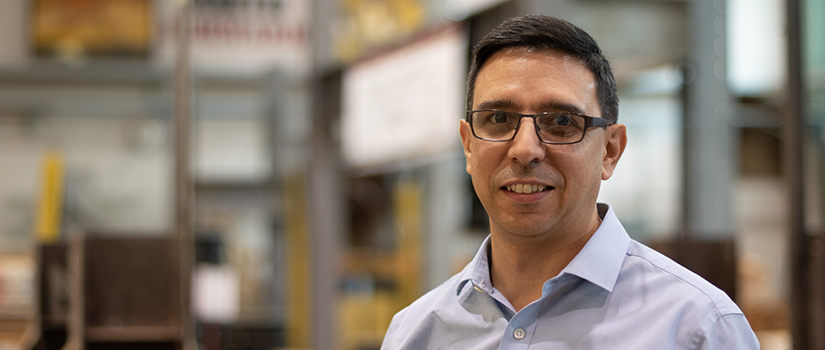By Leigh Thomas | November 1, 2019
Juan M. Caicedo of the College of Engineering and Computing will lead a group of researchers studying how floor vibrations can be used in estimating gait parameters, an opportunity made possible by the National Institute on Aging. The goal of this study is to remotely connect health professionals with older adults as a means of helping them live independently, for a longer period of time, using non-wearable technology.
The National Institute on Aging will award $1,179,484 over four years for the study. Caicedo said, “The United States population is growing older, and there is an urgent need for better tools to connect health professionals with their patients and perform at-home assessments in an automated fashion.”
The research will test whether floor vibration is a viable means to determine gait parameters, which refers to measurement of human motion, body mechanics and muscle activity that is used to assess and treat health conditions in patients. The study will assume that, for healthy individuals living in an independent at-home setting, gait parameters will be consistent, and for individuals developing some conditions, gait parameters will change. This will be tested by studying the gait for patients recently discharged from the hospital and studying if the recovery will correlate with improvements in their gait parameters.
In order to test these hypotheses, Caicedo and his team will 1) develop an automated system to capture floor vibration and extract gait parameters; 2) validate the system in laboratory setting; 3) collect data at participants’ homes; and 4) test the hypothesis that improvement in gait parameters correlates improvement in health status of recently discharged patients.
The team’s hope is that the research will culminate in development of an always-on, non-intrusive, non-wearable smart system for automated at-home gait parameter estimation using floor vibrations. The end result will connect health professionals with older adults living independently through the smart system, which will measure their body movements—and changes therein—by analyzing floor vibrations in their home.
Caicedo said, “This research will have a significant impact on older adult care, the research community and the next generation of researchers and engineers.” He explains that an automated system to measure patients’ gait parameters has the potential to allow earlier intervention resulting in improved health of older adults and reduced health care costs. The team also plans to increase scientific literacy and public engagement through benchmark problems, interdisciplinary seminars, new courses and outreach activities, and also increase the number of diverse convergence researchers competent in solving interdisciplinary problems, including underrepresented groups in STEM fields.
The study is a collaboration between the College of Engineering and Computing, Arnold School of Public Health Physical Therapy Program, San Francisco State University and, as the research progresses, health professionals. Stacy Fritz, associate professor for the Arnold School Department of Exercise Science, said “This study matches expertise between engineering and physical therapy to identify novel ways to monitor older adults in their own environment. While there are numerous wearable options available for monitoring health, these require the older adult to remember to wear them and they do not work when not being worn. This research will instead investigate an in-home passive system that requires no interaction from an older adult who may have limitations in mobility or cognition.”
Caicedo is a professor and chair of the department of Civil and Environmental Engineering. His area of specialization is in structural engineering with emphasis in structural dynamics. His research interests include both numerical and experimental research in the areas of structural dynamics, model updating, structural health monitoring, earthquake engineering and structural control.
The National Institute on Aging leads the U.S. federal government effort to conduct and support research on aging and the health and well-being of older people.
